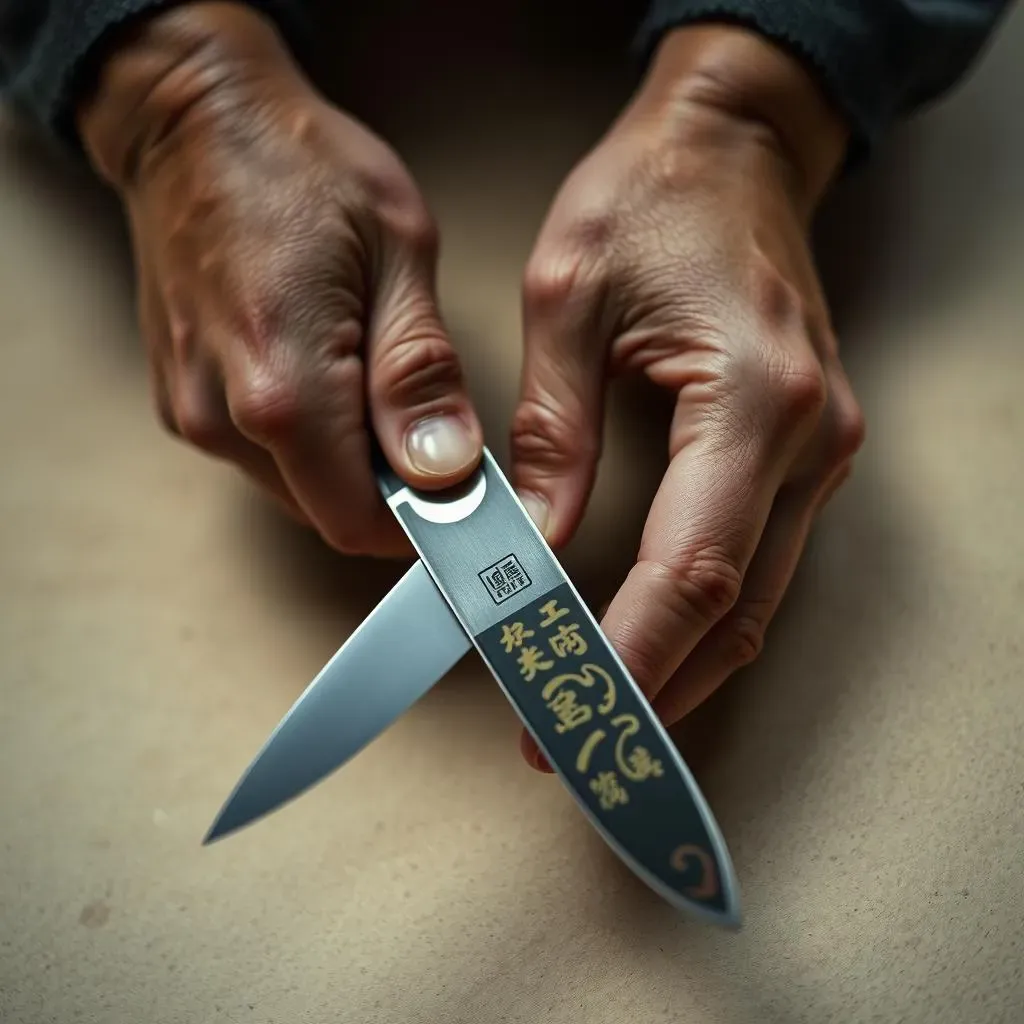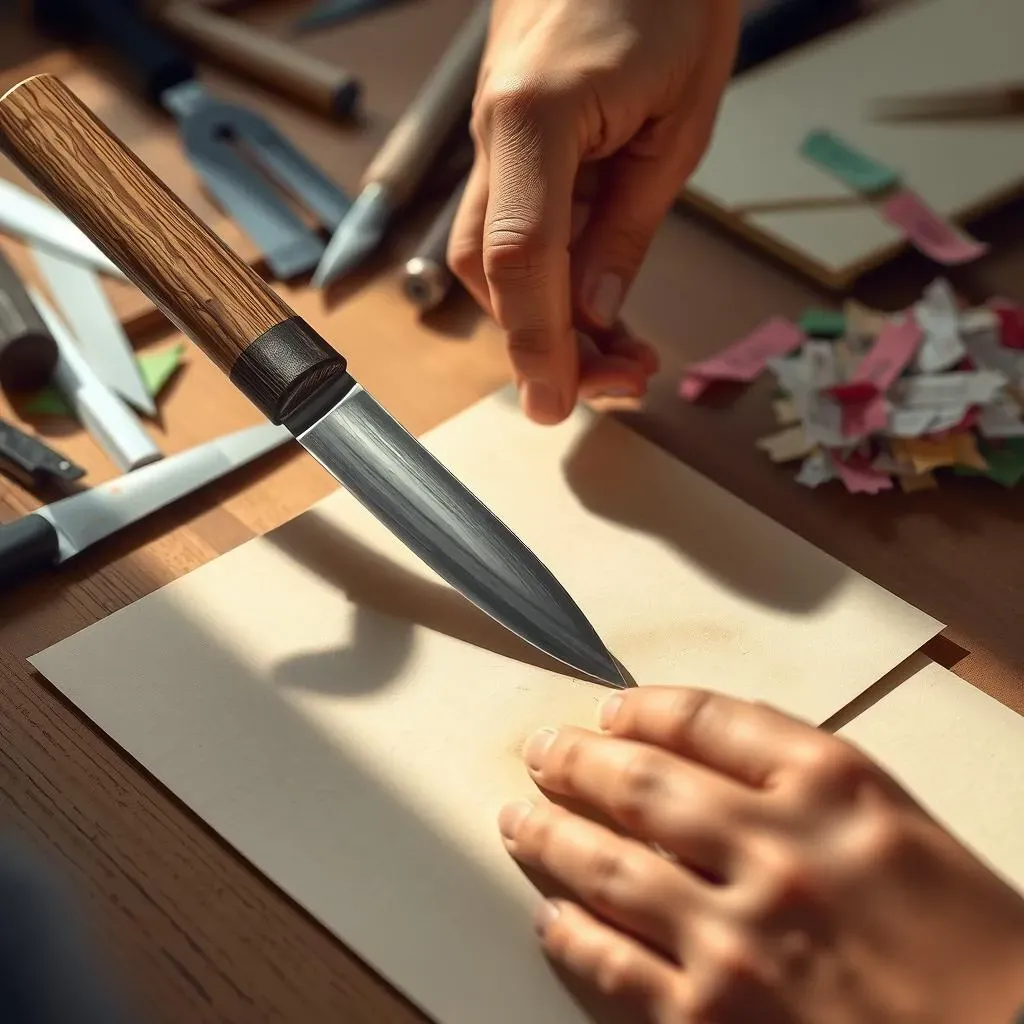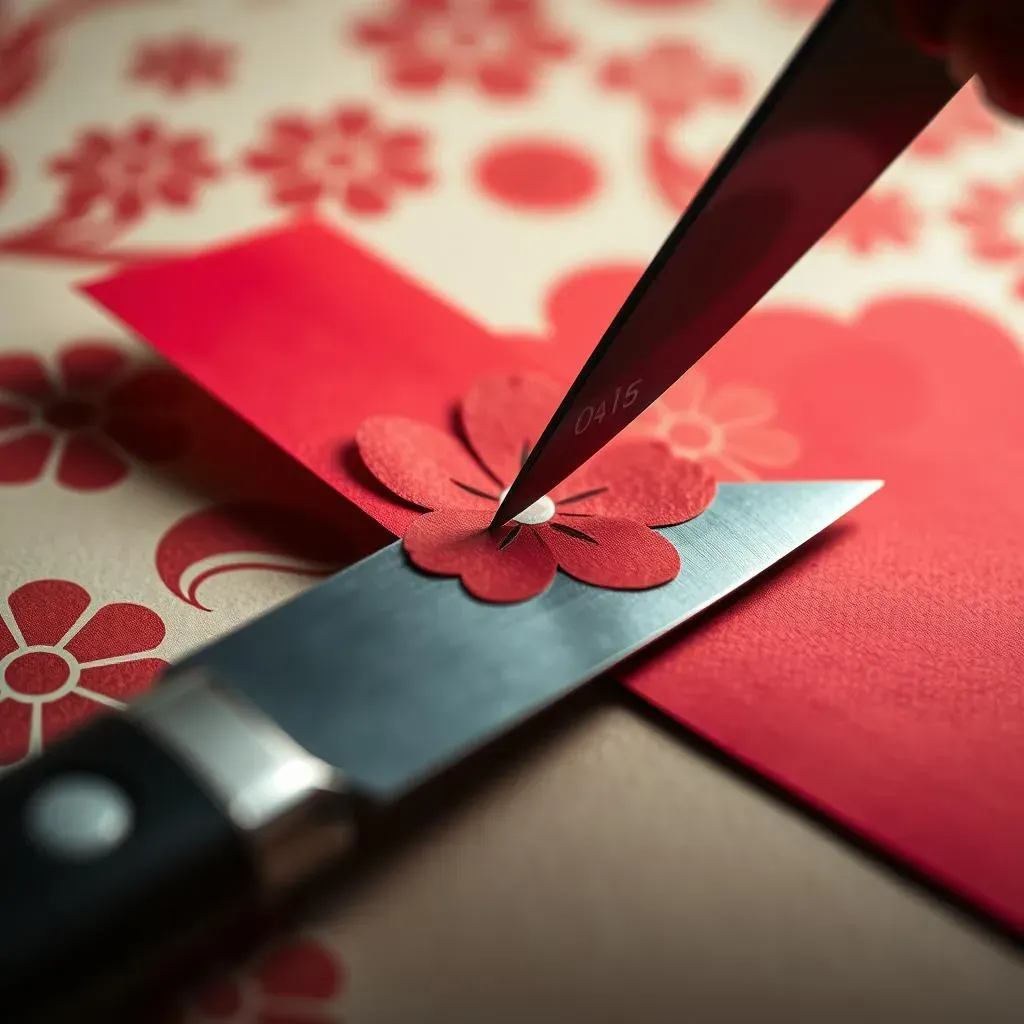Table of Contents
Ever seen paper cut with the kind of precision that makes you think, "Wow, how did they do that?" The secret often lies in the hands of someone wielding a quality japanese paper cutting knife. These aren't your average craft blades; they're meticulously designed tools that blend tradition with incredible sharpness, perfect for everything from intricate paper art to everyday tasks. This article isn't just about fancy knives, it's about understanding the craft behind them. We'll explore what makes a great japanese paper cutting knife, how to pick the right one for you, and the best ways to keep it in top shape. Think of it as your guide to not just owning a tool, but mastering an art form. So, whether you're a seasoned crafter or just curious, let's get ready to cut through the myths and get to the point of what makes these knives so special.
The Art of Japanese Paper Cutting Knives
The Art of Japanese Paper Cutting Knives
The Legacy of Precision
Japanese paper cutting knives aren't just tools; they're a slice of history. These knives evolved from traditional sword-making techniques, inheriting the same dedication to sharpness and balance. Picture the artisan, carefully hammering and folding steel, creating a blade that's as beautiful as it is functional. This heritage is why these knives have an edge, literally, over mass-produced alternatives. They are crafted to be precise, allowing for intricate cuts that other blades simply can't achieve. It's like comparing a surgeon's scalpel to a butter knife; both cut, but one does it with unmatched finesse.
The design of these knives is also rooted in tradition. The handles are often minimalist, designed for comfort and control, allowing the user to guide the blade with pinpoint accuracy. It's not about flashy design; it's about pure, unadulterated functionality. This focus on precision is why these tools are beloved by artists and crafters who need to make delicate cuts with confidence.
More Than Just a Blade
Think of a japanese paper cutting knife as an extension of your hand. It's more than just a sharp edge; it's a connection between your vision and the material. The way the blade feels, the way it moves across the paper, it's all part of the experience. It's about mindfulness, slowing down, and being present with your craft. It is a form of meditation, where each cut is deliberate and purposeful.
This isn’t just about cutting paper, it's about creating. The thin, razor-sharp edge allows for incredibly detailed work, from delicate paper snowflakes to complex geometric patterns. It's like using a fine-tipped pen rather than a marker, each line is defined and precise, allowing you to create details that would be impossible with a lesser blade.
Feature | Description |
|---|---|
Blade Material | High-carbon steel, often hand-forged for superior sharpness |
Handle Design | Minimalist, focusing on comfort and control |
Cutting Style | Precise, allowing for intricate details |
Cultural Significance | Rooted in traditional Japanese sword-making |
The Emotional Connection
There's a certain satisfaction that comes with using a well-made tool, and a japanese paper cutting knife is no exception. It's not just about the end result; it's about the process. The way the blade glides through the paper, the clean lines it creates, it's almost therapeutic. It is a feeling of accomplishment when you see a complex design come to life with your own two hands and a trusty blade. The knife becomes a partner in your creative journey, a tool that responds to your skill and your passion.
Using these knives connects you to a long line of artisans who have valued precision and craftsmanship. You're not just cutting paper, you're participating in a tradition, a way of working that has been passed down through generations. It's a reminder that some things are best done with care and attention to detail, a welcome change in a world that often prioritizes speed over quality.
Choosing Your Perfect Japanese Paper Cutting Knife
Choosing Your Perfect Japanese Paper Cutting Knife
Finding Your Match: Blade Types
Okay, so you're ready to get your hands on a japanese paper cutting knife, that's awesome! But hold up, not all blades are created equal. It's like picking a wand at Ollivander's, you know? You need the one that clicks with you. Think about what you'll be cutting most often. Are you into super intricate designs, or more into clean, straight lines? There are blades with very fine tips, perfect for those tiny details, and others with a bit more heft, ideal for longer cuts. It's all about finding the right fit for your project. Some common types include the kiridashi, with its chisel-like edge, and the more slender blades, which are great for curves and delicate work. Each has its own superpower; it's just about finding the one that matches yours.
The steel also matters big time. High-carbon steel is super sharp and keeps its edge for a long time, but you need to be mindful of rust. Stainless steel is easier to care for, but it might not hold an edge quite as long. It's a bit of a trade-off, and it really depends on your priorities. If you are anything like me, and you love the ritual of sharpening, then high-carbon steel might be your jam. But if you are more into low-maintenance tools, stainless steel is going to be your best friend. Don't worry, we'll talk about that more in the next section. For now, just keep in mind that blade type and steel are key when you're picking your knife.
Blade Type | Best For | Steel Type |
|---|---|---|
Kiridashi | Straight cuts, thicker materials | High-carbon steel |
Slender Blades | Curves, intricate details | Stainless steel |
Specialized Blades | Specific patterns, unique designs | Various |
Handle with Care: Ergonomics and Grip
Let’s talk handles, because what’s a great blade without a comfy handle, right? The handle is where you connect with the knife, and a bad handle can make a great blade feel like a torture device. Japanese paper cutting knives usually have simple, minimalist handles made from wood or sometimes metal. They are designed for a secure grip, but it’s not one size fits all. Consider how the handle feels in your hand. Does it feel balanced? Can you hold it comfortably for long periods of time? You're going to be spending a lot of time with this knife, so you want it to feel like an extension of your hand, not an awkward stick.
Some handles are round, some are oval, and some are a little more square. It's really a matter of personal taste, so if you can, try a few different shapes before settling on one. It might sound silly, but the way a handle fits your hand can make a huge difference in your precision and comfort. You want a handle that allows you to control the blade without having to grip too tightly. It's like dancing; you want the movement to feel smooth and effortless. A good handle means less strain and more joy in your cutting experience.
"The best tool is the one that feels like it was made for you." - A wise crafter, probably.
Maintaining and Using Your Japanese Paper Cutting Knife
Maintaining and Using Your Japanese Paper Cutting Knife
Keeping it Sharp: Sharpening Basics
Alright, let’s talk sharpening, because a dull knife is a sad knife, and nobody wants that. Think of it like this: your japanese paper cutting knife is like a race car; it needs to be tuned up to perform at its best. Regular sharpening isn't just about getting a sharp edge; it's about maintaining the knife's integrity and preventing damage. You don’t need to go full samurai master, but knowing the basics is key. There are different methods, like using whetstones or a honing steel. Whetstones are fantastic for getting a super sharp edge, but they take a bit of practice. Honing steels are easier to use for daily maintenance. It's like choosing between a deep clean and a quick tidy-up. Start with a fine grit, and move to coarser if needed, always following the blade's natural angle. The goal is to keep your blade working like new for years to come.
Don't be afraid to experiment a little, but always be gentle. Think of it like you are giving your blade a spa day, not a wrestling match. If you are not sure, there are tons of great tutorials online, or better yet, find a local knife sharpening expert, they would be happy to give you some tips. Remember, a little care goes a long way, and a sharp knife is not only more effective, it is also safer, because you will not need to put too much pressure when cutting, avoiding accidental slips.
The Art of the Cut: Techniques and Tips
So, you have a sharp knife, now what? It’s time to learn the art of the cut. It's not just about slicing and dicing; it's about finesse and control. Start with a light grip, letting the blade do the work. Avoid pressing down too hard, as that can cause the knife to slip or the blade to break. Instead, guide the knife along your desired path, using smooth, deliberate strokes. Imagine you are painting with the blade; each cut should be fluid and purposeful. The paper should be your canvas, and the knife your brush. It's all about finding the right balance between pressure and precision.
When working with intricate designs, take your time. Don't try to rush the process, as that can lead to mistakes. Instead, focus on one small area at a time, using short, controlled cuts. Think of it like building a puzzle; you need to focus on each piece individually to create the overall picture. Also, always make sure to have a good cutting mat, to protect your table and the tip of your knife. A good mat will not only keep your blade from dulling but also provide a smooth surface for cutting.
Technique | Description |
|---|---|
Light Grip | Avoid pressing too hard; let the blade do the work |
Smooth Strokes | Use fluid, controlled movements |
Short Cuts | For intricate designs, focus on small areas |
Cutting Mat | Always use a mat to protect your surface and blade |
Caring for Your Tool: Storage and Maintenance
Finally, let’s talk about taking care of your knife, because a good tool deserves to be treated well. Think of it like this: your knife is your partner in your crafting adventures, so you need to treat it with respect. After each use, wipe the blade clean with a soft cloth to remove any residue or moisture. Never leave it sitting in water or chemicals, as that can damage the steel. Store your knife in a safe place, away from other tools that might scratch or chip the blade. A knife block or a protective sheath is perfect for keeping it safe and sound.
Also, you will need to oil your blade from time to time, especially if you are using a high-carbon steel blade. A little bit of oil will help prevent rust and keep the blade in top condition. It's like putting lotion on your hands; it keeps them from getting dry and cracked. You don't have to do it every day, but it's a good habit to get into. With a little bit of care and attention, your japanese paper cutting knife will be a reliable companion for years to come, ready to help you bring your creative visions to life.
The Final Cut: Mastering Your Japanese Paper Cutting Knife
So, we’ve reached the end of our journey into the world of the Japanese paper cutting knife. It’s more than just a tool; it's an extension of your creativity. Remember, choosing the right knife, caring for it properly, and practicing with it are the keys to unlocking its full potential. Whether you’re crafting delicate paper snowflakes or just need a reliable blade for precise cuts, a good Japanese paper cutting knife is a game changer. Don't be afraid to experiment, to find what works best for you. Now, go forth and make some amazing cuts. And hey, if you happen to create something incredible, send us a picture – we’d love to see what you’ve made!